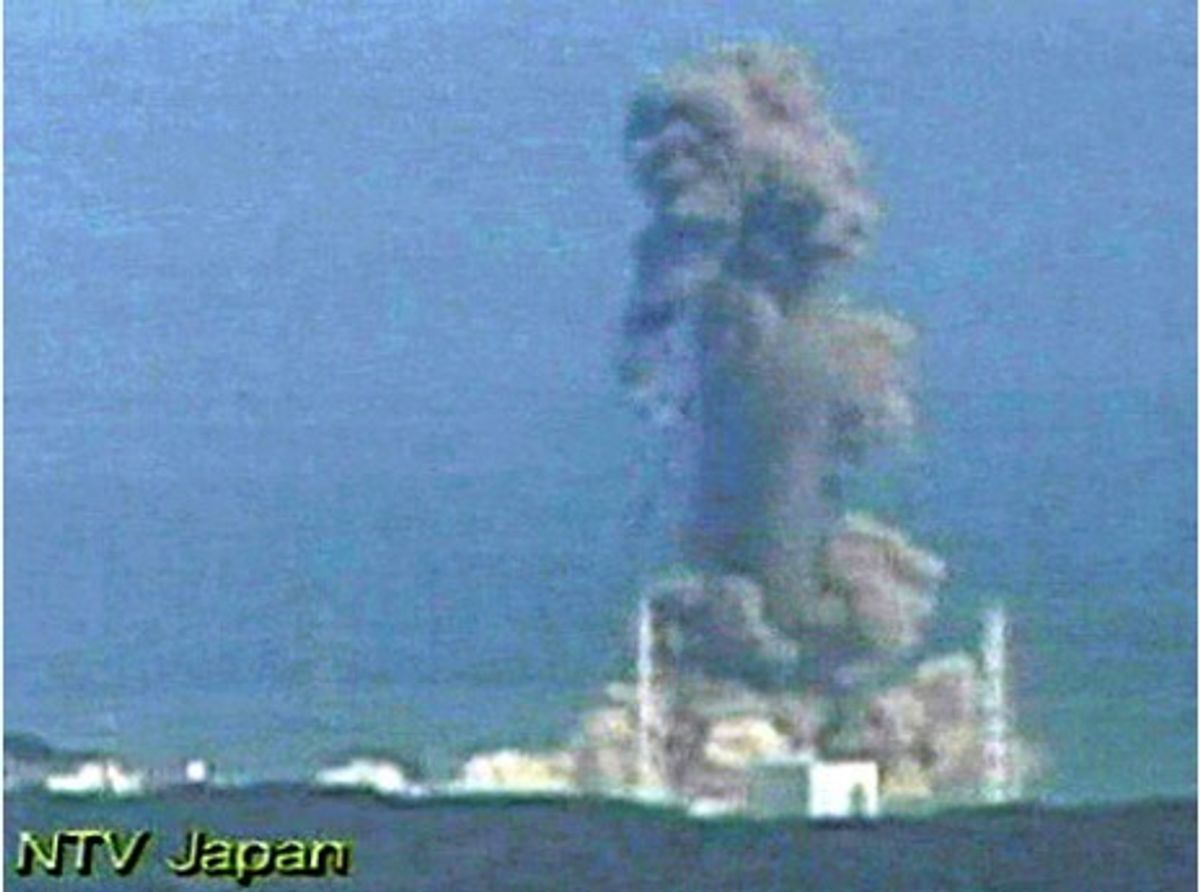Editor's Note: This is part of our ongoing news coverage of Japan's earthquake and nuclear emergency. John Boyd is an IEEE Spectrum contributor reporting from Kawasaki, Japan.
On day four of Japan's nuclear emergency, a second explosion has struck the Fukushima Dai-1 nuclear power plant, and officials warn that a third explosion is possible.
Japanese television screens around the country showed a huge plume of gray smoke billowing up. Today at around 11 a.m. local time a hydrogen explosion rocked the Fukushima Dai-1 nuclear plant. The detonation occurred in the structure housing the unstable No. 3 reactor; this came two days after a similar explosion occurred at the plant's No. 1 reactor structure. Judging by the size of the new smoke plume and visible damage to the structure's framework, today's explosion was of much greater strength.
According to Masashi Goto, a former design engineer of nuclear containment vessels with Toshiba Corporation, the increased intensity of the explosion was likely due "in part to the larger size of the reactor." The No. 3 reactor has a capacity of 784 megawatts, compared to the 460 megawatts for the No. 1 reactor—that means the No. 3 reactor probably produced a larger cloud of hydrogen gas, which interacted with steam escaping from the reactor to cause the explosion.
The government had warned that this explosion was possible. Pressure had been building in the reactor since its cooling system failed and a hydrogen cloud began forming in the space between the reactor and the inner walls of the outer structure. The plant is located in the area hit by the massive 9.0 earthquake and devastating tsunami on Friday. Three of the plant's reactors were in operation at the time, with three more closed for maintenance. All three active reactors automatically shut down when the cooling systems developed problems, but the shut-down didn't contain the ongoing disaster.
Japan's Chief Cabinet Secretary Yukio Edano told reporters that the new blast had not damaged the containment vessel protecting the reactor itself (officials have also said that the explosion around the No. 1 reactor didn't damage that reactor's containment shell). Edano said that radiation monitoring after the blast had not shown a significant increase in radiation.
Tokyo Electric Power Company (TEPCO), which operates the plant, had been pumping seawater into the No. 3 reactor to cool it down, but the operation ran into unspecified trouble, apparently resulting in the explosion. Nuclear expert Goto explains that using seawater "was a stopgap fix, and not as efficient as the original cooling system because it takes longer to cool the fuel rods."
Now the government is warning that a similarly dangerous situation is building in the No. 2 reactor.
TEPCO announced today that cooling efforts in its No. 2 reactor had failed and pressure was building, so operators were making preparations to pump seawater into the reactor. Japan's national television broadcaster and Kyodo News Service later reported that the water level in the No. 2 reactor had fallen to fully expose the fuel rods, which likely caused some of them to partially fuse.
Goto said that based on the reports it seems the mobile pump being used to push seawater into the No. 2 reactor had run out of fuel. He didn't know what kind of pump was being used. Goto, who earned his Ph.D. by evaluating the stress that reactor container vessel can endure, quit his job with Toshiba Corporation due to his concerns over reactor safety. "I came to the conclusion that the vessels being built were not adequate enough to be the last line of defense," he says. "They weren't designed to withstand the kinds of problems currently being experienced in the Fukushima plants." He now teaches design engineering at Shibaura Institute of Technology in Tokyo.
However, the government sounded one cautiously optimistic note today: Edano claimed that none of the troubled reactors were likely to experience a total meltdown.





